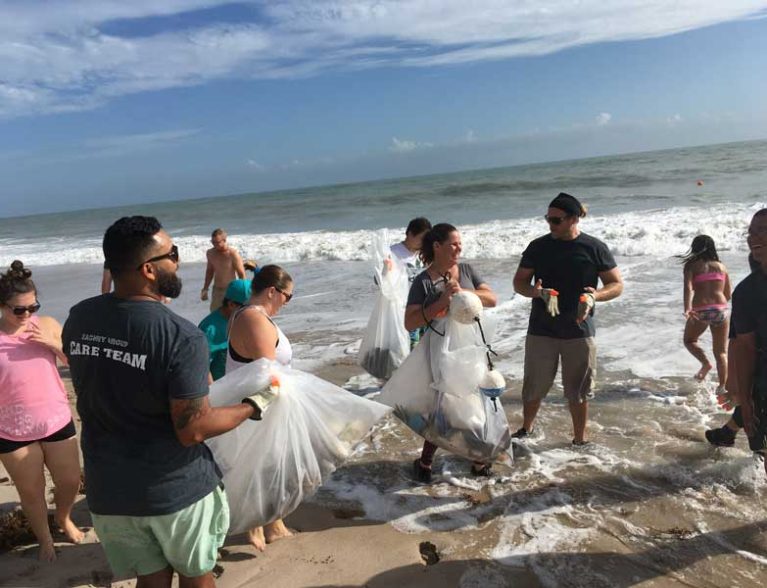
INDIAN RIVER COUNTY — The Indian River County edition of the world’s largest single-day volunteer ocean conservation event is expected to draw upwards of 1,000 participants to beaches, river banks, parks, and marshes from 9 a.m. to noon on Sept. 15.
It’s the Ocean Conservancy’s 33rd annual International Coastal Cleanup, an event that began with a handful of trash pickers on a Texas beach in 1986 and has now grown to include 13 million volunteers worldwide.
Participants in all 50 states and more than 100 countries picked up more than 20 million pounds of trash during last year’s event. Indian River County accounts for 10,000-15,000 pounds each year, according to Daisy Packer, executive director of Keep Indian River Beautiful, the event’s local organizer.
For this year’s clean-up, the primary target will be plastics – a huge and ever-growing plague in the marine environment.
“When plastic is in the sun, it degrades,” Packer said. “We thought it went away. But it just gets smaller. It’s not visible to the eye, but it’s still there.”
These micro-plastics are ingested by fish, birds and other marine life, making them sick and even killing them and ultimately harming humans who re-consume the plastic particles when eating seafood.
Worldwide, 2017 was the first year since the International Coastal Cleanup began that all 10 of the most collected trash items were made of plastic, according to the Ocean Conservancy. Cigarette butts that contain plastic filters topped the list, with food wrappers, plastic beverage bottles, plastic bottle caps and plastic grocery bags rounding out the top five.
Volunteers have come across some unusual finds while cleaning beaches and riverbanks over the years: a glass eye found at St. Lucie Inlet State Park, car parts, an entire living room set, lingerie and a hamster in a cage. A few years ago, a stray Arctic seal was found sitting on the beach in Martin County.
Packer said it’s believed the seal was grabbed by poachers heading to South America and later dumped to avoid detection by law enforcement. The animal was treated and released back to the wild, she said.
Keep Indian River Beautiful, has set up more than 20 clean-up sites stretching from Treasure Shores County Park south to Round Island, providing work gloves, cleaning tools and data collection sheets for volunteers.
Participants are asked to log each item collected on either a paper data card or on Ocean Conservancy’s Clean Swell app, available at the App store or on Google Play. The trash index helps inform policymakers looking for solutions to the growing problem of plastics in the ocean.
Packer said, “We have businesses, schools, church groups and groups of neighbors. By being out there [gathering up trash], you’re preventing animal deaths and islands of plastic from going into the ocean.”
International Coastal Cleanup 2018 coincides with National Estuaries Day, and the Environmental Learning Center on Wabasso Island is planning a dual celebration featuring an 8 a.m. canoe clean-up in the Indian River Lagoon, followed by free admission for volunteers to special exhibits and activities from 9 a.m. to 1 p.m.
Guest exhibitors include the FAU/Harbor Branch Oceanographic Institute’s marine mammal rescue ambulance, the Brevard Zoo, Pelican Island Audubon Society, Pelican Island National Wildlife Refuge and Disney’s Vero Beach Resort.
Packer says everyone of any age is invited to help with the coastal cleanup, but participants are asked to pre-register at www.keepindianriverbeautiful.org. For more information about the ELC event, visit www.discoverelc.org or call 772-589-5050.



